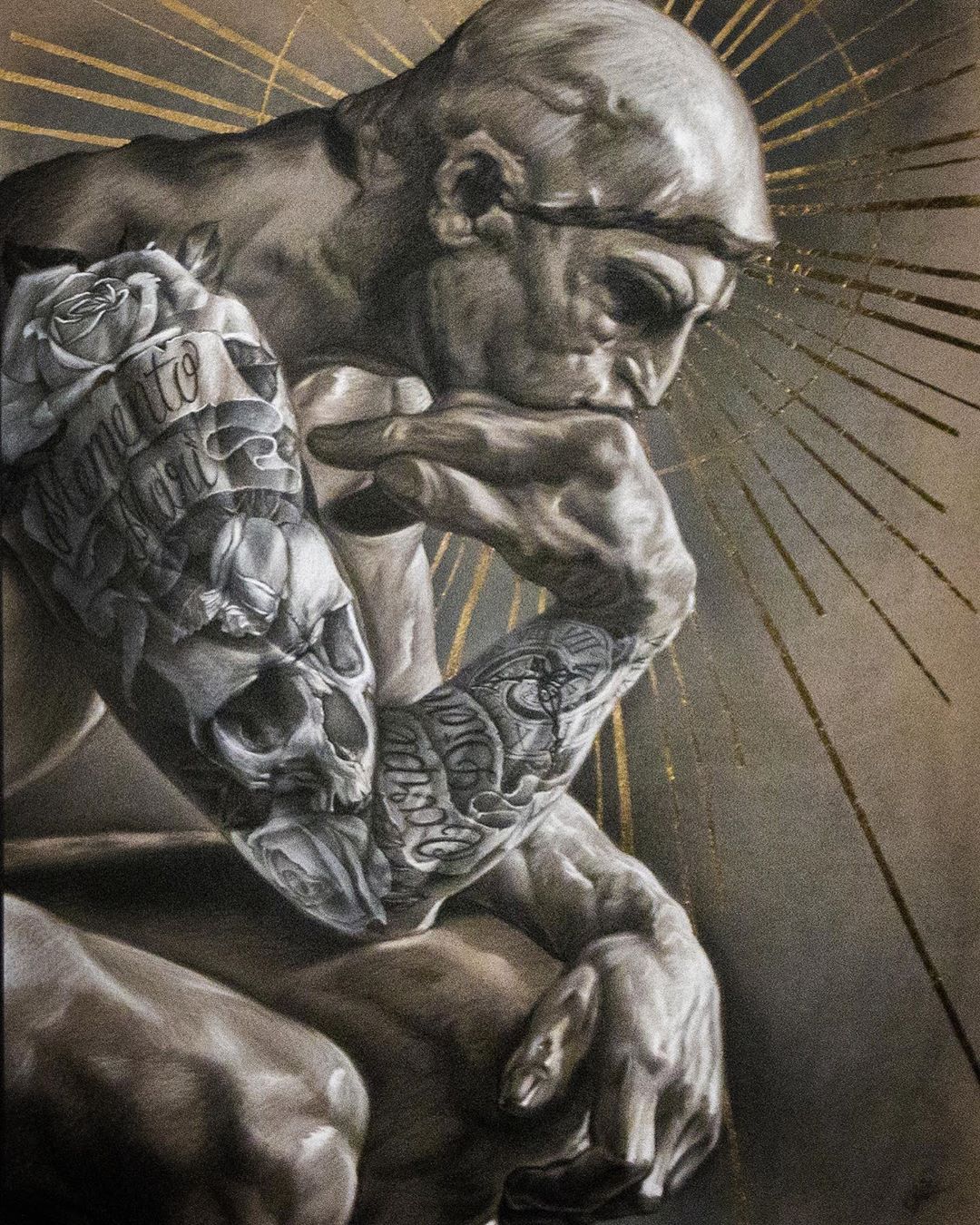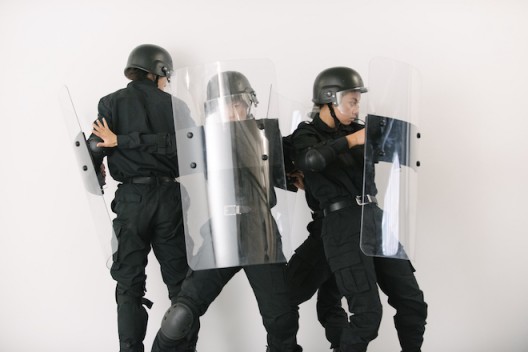Transaction/Evacuation
2014 - Drawing & Print (Drawing & Print)
19 11/16 x 14 3/16 in
Khadim Ali & Sher Ali
Transaction/Evacuation is a collaborative painting by Khadim Ali and Sher Ali, and is part of a larger collaborative body of works by the artists, which share the same title. Like Khadim Ali, Sher Ali is also part of the Hazara people, and experienced massive personal and social trauma early in life, losing his parents at the age of ten and witnessing the devastation of the Afghan Civil War in his native Kabul. The horned figure in the foreground represents Rustam, a legendary hero in Iranian mythology and central character in the Shahnameh, who depicted here by the artists as a potbellied demon, stripped away of its heroism. Demons are a recurring motif used by Khadim Ali to portray his own people and history. As he explains, the demons are “a collective portrait of Hazaras through the eyes of others,” and as such they speak of the dehumanization and demonization that Hazaras have and continue to endure. Another key figure in the work, and also a recurring motif in Khadim Ali’s oeuvre, is the image of Buddha. The motif represents the homeland of the Hazaras—the land of the Bamiyan Buddhas—and is also a reference to the great sense of loss after in 2001 the Taliban destroyed the monumental statues of Buddha dating from the fourth and fifth century. In Transaction/Evacuation , the artists draw inspiration from miniature Iranian painting, incorporating traditional techniques and materials—such as gold leaf and gouache on wasli paper – as a vehicle for telling their shared experience of persecution, displacement and discrimination.
Khadim Ali was born in Quetta, Pakistan, after his family fled their home in Afghanistan to escape persecution from the Taliban. Part of a highly persecuted minority group called the Hazaras, he grew up as a refugee, and from an early age he was confronted with the discrimination, displacement and genocide of his people, which is a key focus of his work as an artist. Ali was trained in classical miniature painting in Lahore, Pakistan and in mural painting and calligraphy in Tehran, Iran, and as a result he incorporates delicate handwork and materials from these traditions into his intricately rendered paintings, and large textiles. Another key influence is the Shahnameh or Book of Kings, a tenth-century epic poem and an icon of Persian literature, which Khadim Ali grew up listening to as a child when his Grandfather sang poetry from it, and crowds would gather to hear his voice. The illustrated version of the book contained paintings from 15th century Iran and Afghanistan, which marked his first encounter with miniature painting and would become his a gateway into the world of art. Borrowing motifs from The Shahnameh, his works are imbued with the deeply personal, drawing a trajectory between his own past, the somber history of the Hazaras, and the abiding sense of displacement, loss and melancholia.
Colors:
Related works sharing similar palette
» see more
Related works found in the same semantic group
» see more

© » KADIST
Ali Cherri, in conversation with Audrey Norcia In the framework of “ Visite croisée” with Jeu de Paume 3pm Meeting point at Jeu de Paume with Ali Cherri and Osei Bonsu : presentation of the exhibition Somniculus 4.30 pm KADIST : Exhibition tour Conceal, cover with sand, replicate, translate, restore 5pm Conversation between Ali Cherri and Audrey Norcia Ali Cherri is an artist...

© » KADIST
Zhang Kechun
2020Zhang Kechun’s photographic series The Yellow River documents the effects of modernization along the eponymous Yellow River, the second longest in Asia...

© » KADIST
Juliana Huxtable
2017Herculine’s Prophecy by Juliana Huxtable features a kneeling demon-figure on what appears to be a screen-print, placed on a wooden table, which has then been photographed and digitally altered to appear like a book cover, with a title and subtitle across the top, and a poem written across the bottom...





